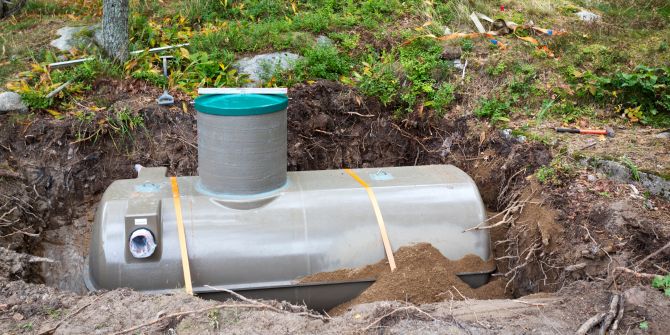The world of septic tanks can seem confusing at times, and this isn’t helped by the language and naming often used to label certain products, procedures, or features.
We’ve put together this helpful guide to explain some of the terminology you might find in the world of sewage treatment.
Sewage Terminology
Active System
An active system is a septic system which uses external energy or mechanical components to process wastewater.
Aerobic Bacteria
Aerobic bacteria are bacteria which can exist in the presence of oxygen – they are responsible for the removal of biological materials from sewage and septic systems, including harmful pathogens.
Anaerobic Bacteria
Anaerobic bacteria are bacteria which can exist without the presence of oxygen – they are responsible for breaking down biological waste in sewage and septic systems, and help keep the Biomat under control.
Baffles
A baffle is a device which restricts the flow of wastewater in septic tanks, preventing the outflow of sludge and scum into the drainage field.
Biomat
Biomats are the layer of material which exists underneath the soil under and around a septic tank and drain field – it acts as an additional layer of protection, filtering out potentially harmful bacteria and other microorganisms leaving the septic tank.
Biomats are also used for the disposal of greywater.
Black Water
Black water is water contaminated by waste from toilets, urinals, and drains.
Cesspits
A cesspit is a holding tank similar to a septic tank, except the wastewater is not treated and must be regularly removed to prevent overflowing – all cesspits must be kept in line with modern regulations.
Discharge Pipe
A pipe which allows for the draining of septic effluent.
Drainage Field
Drainage fields are large beds which can absorb and filter the effluent from a septic tank.
FOG
FOG stands for the Fats, Oils and Greases which can clog up your drainage system.
If FOGs are poured down your drains too regularly, this can lead to the creation of Fatbergs – read more about how to deal with them here.
Effluent
Effluent is the name given to the partially treated wastewater flowing out of a septic tank or sewage system.
Environment Agency
In England and Wales, the Environment Agency is the primary body responsible for flood and waste management, the regulation of land and water pollution, and conservation.
The Scottish Environmental Protection Agency (S.E.P.A.) and the Irish Environment Protection Agency (E.P.A.) also manage the regulation of wastewater.
Grey Water
This is water which doesn’t contain any human waste, but is produced from bathing, washing up, laundry, or any other household facility.
Groundwater
Water which is naturally present below the Earth’s surface.
Holding Septic Tanks
Holding septic tanks are different from regular septic tanks in that they are not connected to any drains – to empty a holding septic tank, a septic pumping company must remove the waste.
Influent
Influent is the untreated sewage and wastewater which enters the septic tank.
Passive System
A passive septic system is a type of sewage treatment system which uses no external energy supply or mechanical parts to function.
Percolation Test
A percolation test is a method of determining how quickly water drains away from the soil – it involves digging a hole to a specified depth, filling it with water, and timing how long it takes to soak away.
You will often need a percolation test if you are planning to install a septic tank or soakaway – for more information on when you need a percolation test, click here.
Retention Time
The amount of time effluent remains in a septic tank.
Riser
A riser extends from a septic tank opening, allowing quick access to the septic tank lid without the need for expensive digging and groundworks.
Scum
Scum is the solid layer of soap, grease, oils, and fats which floats to the top of a septic tank.
Septic
The word ‘septic’ comes from the Greek word for ‘rotten’ – it relates to the process of putrefaction.
Septic Tank
A septic tank is an underground tank which processes domestic wastewater for sewage treatment – they are perfect for rural areas where there is no connection to a sewerage system.
Septic tank systems can use biological and chemical processes to remove harmful bacteria and waste from the water – a process that typically forms sludge which then sinks to the bottom of the tank needing removal.
Settling Chamber
Settling chambers slow the rate at which effluent travels through the septic system, allowing the solid waste materials to separate from the wastewater.
Sewage
Sewage is the name given to human and household wastewater discharged into drainage systems – you can find out more here about how to keep your drains unblocked.
Sludge Layer
A sludge layer sits at the bottom of a septic tank, composed of solid waste and other sunken materials.
Soakaway
Soakaways are drainage fields or large sections of dug ground used to temporarily store water before it is discharged back into the ground.
Treatment Chamber
The treatment chamber is a container where the sewage is held for processing.
Vent Pipe
Vent pipes connect to sections or components of a septic system and allow for any trapped air or gases to escape into the atmosphere.
Got Any Questions?
Want to know more? Get in contact with one of our team today to find out about any of our septic systems or drainage services.
